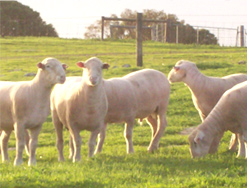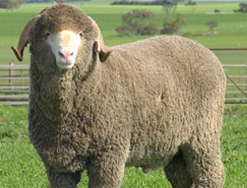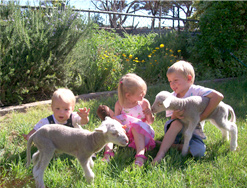Technology
The SA State Government has decided that all livestock to be sold after the 1.1.2025 will need an electronic tag. We have already started towards this goal and all lambs born in 2022 and 2023 have already been tagged with an EID. We are combining this technology with data collection on the animals
Orrie Cowie uses the latest breeding and objective measurement technology to select quality genetics to continue improving the quality of their flock.
High fertility as a priority is now being enhanced by the identification of elite animals. Their influence has been increased through advanced breeding techniques.
AI and ET are important breeding tools, in addition to paddock and synchronised mating used at Orrie Cowie.
Wool is tested by Lazerline, Peterborough, SA.
Carcase measurements are also being used to identify superior carcase traits. Most importantly the early maturing traints of Orrie Cowie sheep are being highlighted.
Our MerinoSelect data is available and in 2015 we had several rams that were trait leaders for the most important production traits.
Fleece and Production Measurements Explained
The rams from Orrie Cowie will naturally breed towards the current clip average. However, selection of softer and finer wool rams with careful use should ensure a reduction in your clip averages. Orrie Cowie stud flock microns are decreasing, yields increasing and comfort factors increasing as a consequence of years of judicious selection, mating and classing.
Fibre Diameter (FD)
This is the measurement of the average diameter of 1000 fibres, taken at random from a mid-side sample. Measured in microns using the latest AWTA approved Laserscan machine.
Comfort Factor (CF)
This is the measurement of the wool fibres in a sample which are less than 30 microns and expressed as a percentage viz. 98% and above is very good.
Coefficient of Variation (CV)
Measures the spread of fibre diameter variation relative to the average fibre diameter of the sample as a percentage. CV can be used to compare wools of different micron averages in terms of fibre diameter distribution. A lower CV is more desirable. The national flock average is 24.7%.
Standard Deviation (SD)
Measures in microns the spread of fibres either side of the mean FD in which 68% (two-thirds) of the fibres lie. The lower the SD the more uniform the wool.
Body Weight (BW)
The body weight of the ram measured in kg (using electronic scales), accurate to 0.5kg.
Wool Quality Index (WI)
This is a subjective estimate of the expected performance of the fleece under prolonged wet or extremely dusty conditions, rating of 1-6 with 6 being of excellent quality.
Body Wrinkle Score (BWS)
Classer’s assessment of the degree of body wrinkle or plainness with 1 being very plain and thin, and 4 heavier and thicker.
Fat
Ultrasound measurement of fat depth in mm over the eye muscle.
EMD
Ulstrasound measurement of eye muscle depth in mm giving an indication of carcase quality. The higher the measurement the bigger the eye muscle.
SC
Scrotal circumference measured in cm. This is an indication of the fertility of the sire's daughters.
Twins
These rams have been conceived and reared as twins.



